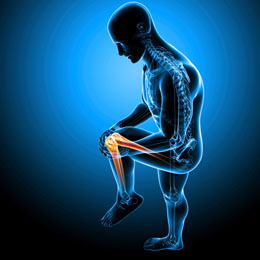Chronic compartment syndrome is a disease where there is pain in a limb due to accumulation of pressure over a substantial period of time. Read on to know more about this condition...

The muscles of our arms and the legs are split into certain sections, or compartments, each of which are bound by strong and unyielding connective tissue membranes, called fascia, which are often attached to the bone at one end. Compartment syndrome arises when there is an accumulation of pressure in these compartments, due to which the normal blood supply and functional activity of that muscle is hampered, which leads to severe pain. The pain worsens over time, due to the unyielding nature of the fascia. The more common form of this condition is acute, but it can also occur over time.
Causes
There can be many reasons that can be attributed to the development of this condition. Any condition that causes fluid leakage or fluid retention in the limbs can lead to this disease. Sometimes, repetitive actions like cycling can also lead to a chronic form of compartment syndrome, and this is one of the reasons why this condition often occurs in athletes. Conditions that can lead to it include tibial or forearm fractures that cause swelling, ischemia following injury, hematomas and hemorrhages (due to which blood leaks into the surrounding tissue, thus, causing pressure on the fascial tissue), vascular puncture, intravenous injection, prolonged limb compression, crushing injuries of limbs, burns, etc. Sometimes, this condition may also occur following surgery.
Symptoms
One of the main symptoms is pain in the lower limbs. In fact, severe pain is one of the first signs of this disease. The pain is very severe, deep seated, and constant. There may also be paresthesia, paralysis of the limb, numbness in the digits of the affected limb, pallor, and sometimes, if the blood flow to the region is severely affected, a diminished or near-absent pulse. This disease is relatively difficult to diagnose. This is because there are many diseases and conditions where the patient complains of leg and arm pain. Most doctors write such conditions off as muscle cramps or transient ischemic bouts of pain. This difficulty in diagnosis is further compounded by the fact that often the external appearance of the limb is perfectly normal.
Treatment
It is important to take measures to treat this condition as soon as it is diagnosed, as there can be disastrous complications, such as irreversible nerve and muscle damage, and ischemic gangrene that may occur if the blood supply to the affected region is not restored in time. Thus, two approaches can be taken―conservative approach and surgical approach. Conservative treatment of this condition includes asking the patient to take adequate rest. This is important because this condition is often seen in athletes who overwork themselves, or who do not do proper warm-ups before going in for doing strenuous exercises. One can also take painkillers and anti-inflammatory drugs to help mitigate the pain and symptoms. For unrelenting cases, or cases whose symptoms aggravate suddenly, one can always go in for surgery.
It is best to not ignore symptoms of pain in any limb, and to get it diagnosed at the earliest, because if left untreated, it can lead to dire complications that could even turn fatal.


 The muscles of our arms and the legs are split into certain sections, or compartments, each of which are bound by strong and unyielding connective tissue membranes, called fascia, which are often attached to the bone at one end. Compartment syndrome arises when there is an accumulation of pressure in these compartments, due to which the normal blood supply and functional activity of that muscle is hampered, which leads to severe pain. The pain worsens over time, due to the unyielding nature of the fascia. The more common form of this condition is acute, but it can also occur over time.
The muscles of our arms and the legs are split into certain sections, or compartments, each of which are bound by strong and unyielding connective tissue membranes, called fascia, which are often attached to the bone at one end. Compartment syndrome arises when there is an accumulation of pressure in these compartments, due to which the normal blood supply and functional activity of that muscle is hampered, which leads to severe pain. The pain worsens over time, due to the unyielding nature of the fascia. The more common form of this condition is acute, but it can also occur over time.